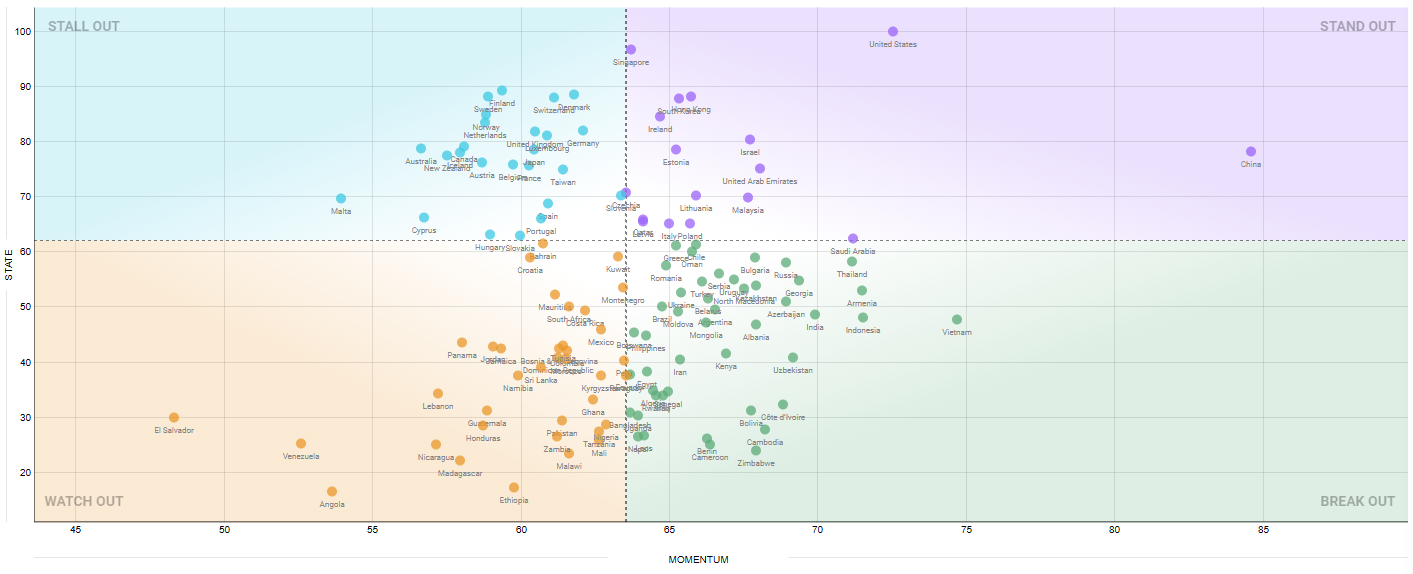Despite rapid AI advances, global digital development is slowing, especially in regulation and inclusion, raising concerns that late-adopting economies may fall further behind in an AI-driven world, warns a new global index from Tufts and Mastercard.

Digital Evolution Index from The Fletcher School at Tufts University Provides In-Depth Look at Technology adoption and the state of AI around the world.
Digital Planet, published by The Fletcher School at Tufts University, has unveiled the Digital Evolution Index, charting the progress of 125 economies around the world in advancing their digital economies, developing artificial intelligence (AI), and integrating connectivity into the lives of billions.
This latest edition of the index, developed in collaboration with Mastercard, illustrates global digital development, provides insights into key drivers of change and momentum, and explores implications for economies navigating a post-pandemic landscape increasingly shaped by AI.
The emerging digital landscape is not marked by rapid transformation but rather by a global digital deceleration, especially in demand and institutional measures. Metrics related to gender and class digital inclusion have plateaued, and since 2019, institutional capabilities around tech regulation, trust-building, and bureaucratic efficiency have stagnated.
AI is creating an amplification effect, accelerating digital advantages and reinforcing dominance among digitally advanced economies. This "winner-takes-most" scenario underscores the risk that countries lagging in AI adoption may find it increasingly difficult to catch up.
Key Findings
- Progress to Digital Parity: Digital inclusion is slowing globally. Europe and Central Asia lead in gender digital inclusion, while Africa and the Middle East lag, with rural-urban divides persisting.
- The Resilience of Digital Entrepôts: Small digital hubs have shown resilience during and after the pandemic, driven by agility, openness, and innovation. These entrepôts offer models for cross-border collaboration in the AI era.
- China’s Mobile-First Ascension: China is the first primarily mobile-driven economy to reach the “Stand Out” category, despite low PC/laptop ownership. Its mobile super app model presents a blueprint for developing mobile-first economies like India, Indonesia, and Vietnam.
- Three-Speed Digital Transformation in Europe: Europe’s digital ecosystem has split into three clusters—Established, Surging, and Emerging economies. These form an interdependent system with diverse digital development paths and policy experimentation opportunities.
“The Digital Evolution Index reveals a crucial inflection point,” said Bhaskar Chakravorti, Chair of Digital Planet and Dean of Global Business at The Fletcher School. “AI is amplifying existing advantages and creating a 'winner-takes-most' scenario. As digital economies expand, global trade tensions and policy debates around digital services taxation will intensify. Regional models offer valuable lessons for building resilient digital economies under these evolving conditions.”
A Global Outlook on Digital Evolution
Digital Evolution maps an economy’s digital transformation over time, using data from 15 years and covering over 92% of the world’s population. The index assesses 184 indicators across four pillars:
- Institutional Environment
- Demand Conditions
- Supply Conditions
- Capacity for Innovation and Change
Digital Economy Categories
- Stand Out: Highly advanced digital economies with strong momentum (e.g., U.S., Singapore, South Korea, Ireland, China).
- Stall Out: Mature digital economies with slower momentum (e.g., Sweden, UK, Japan, Canada).
- Break Out: Rapidly evolving digital economies with growth potential (e.g., India, Vietnam, Indonesia, Armenia).
- Watch Out: Economies with significant gaps but growing youth digital engagement (e.g., Nigeria, Colombia, Pakistan).
Access the full report and methodology here.